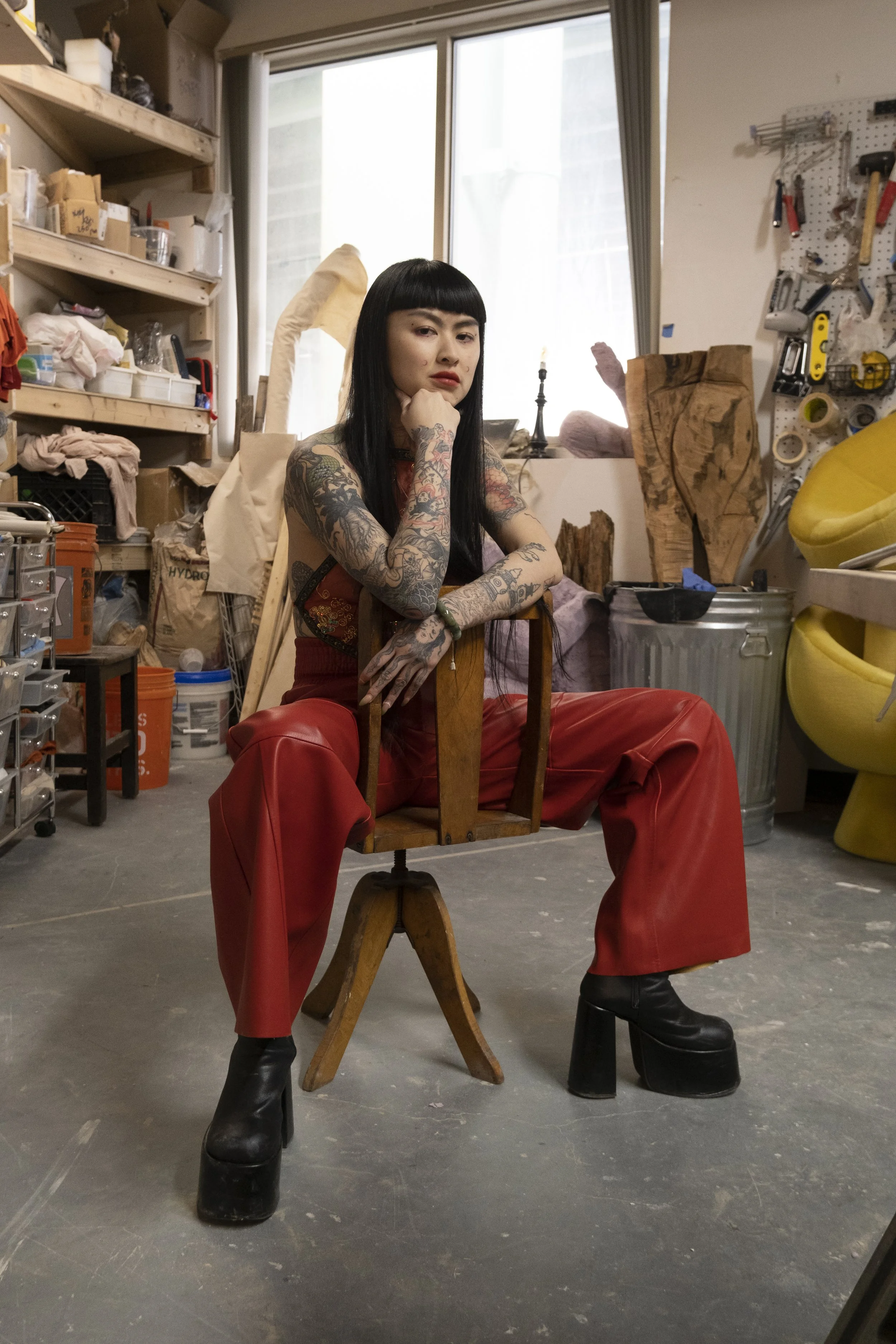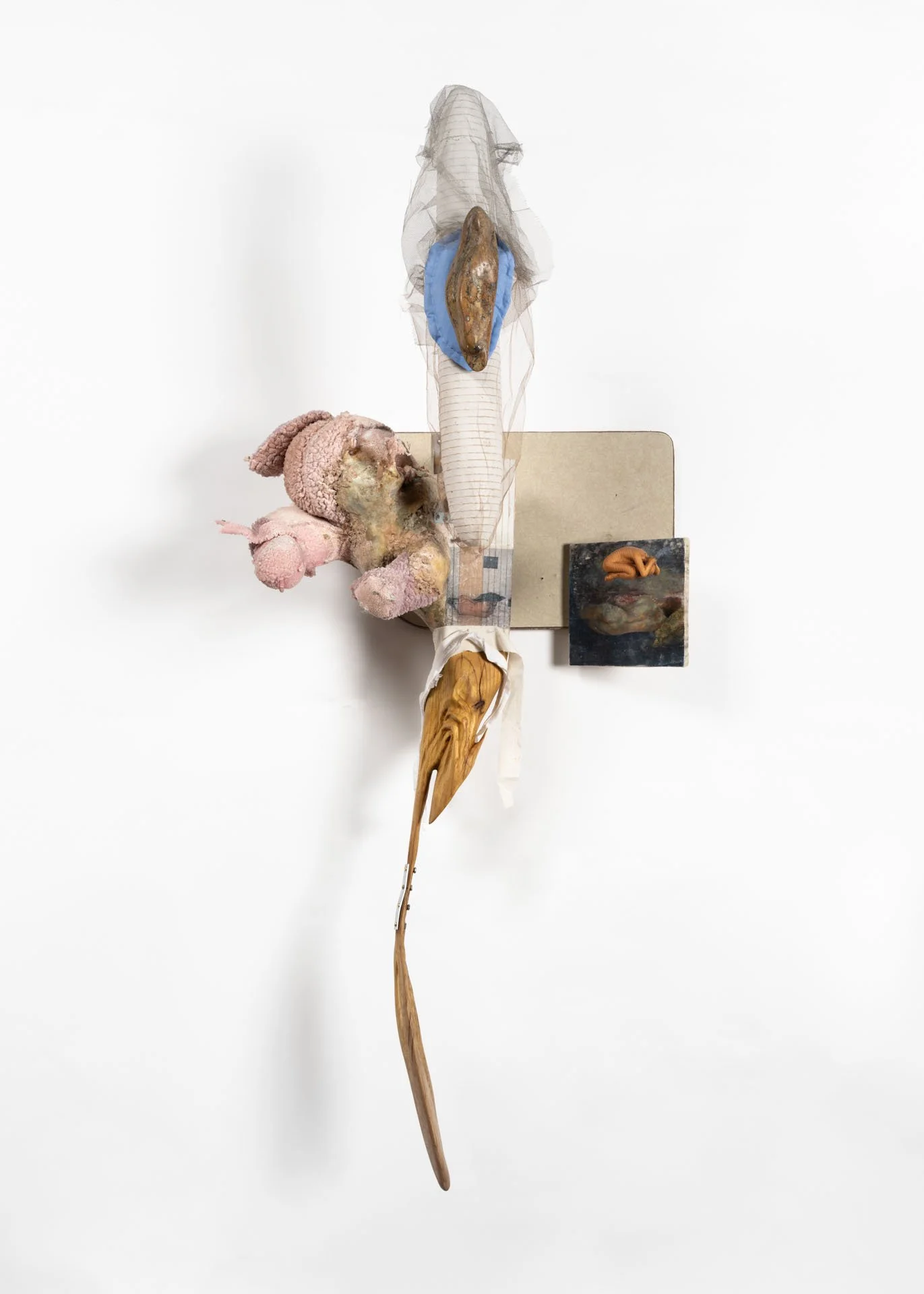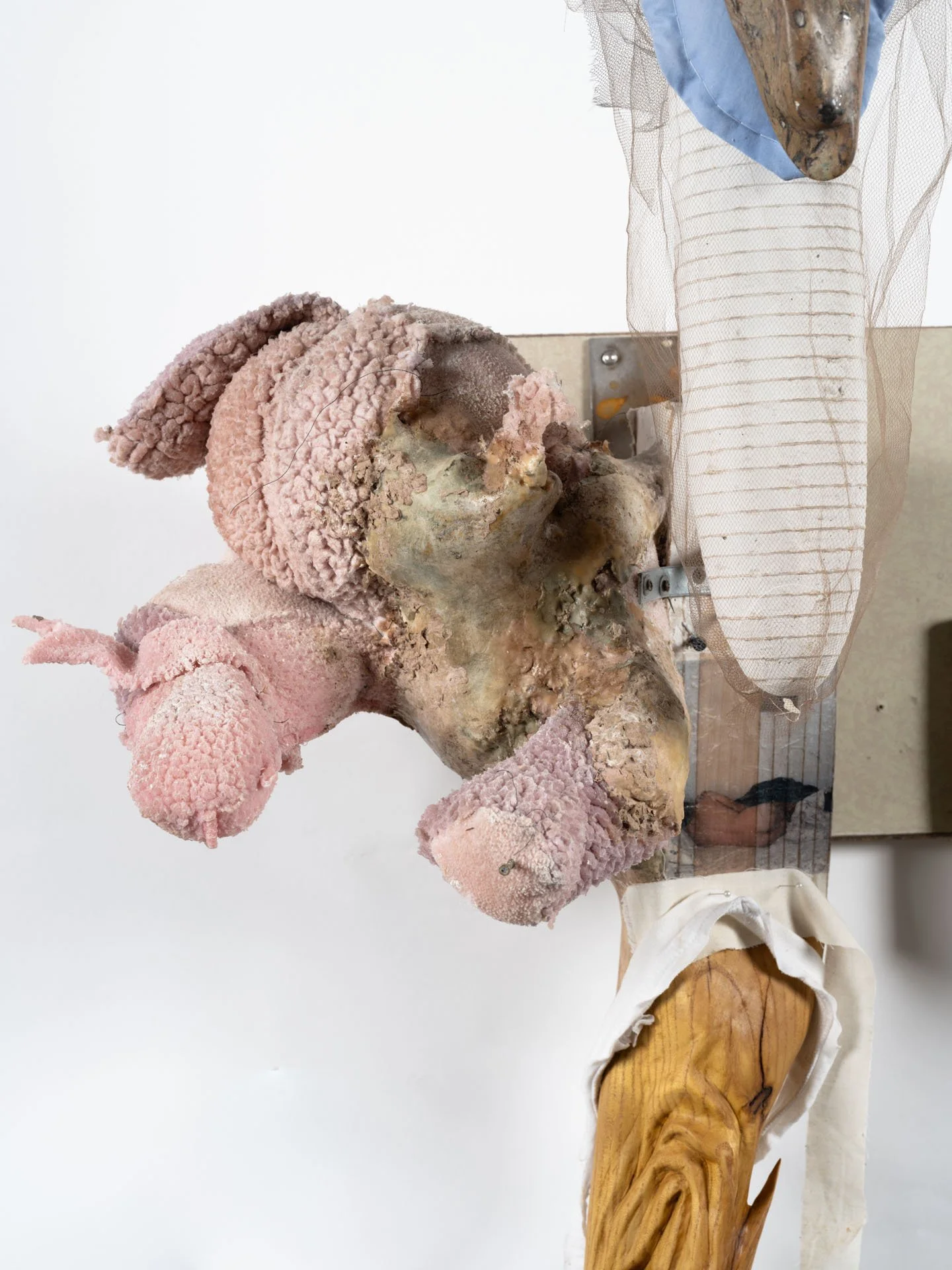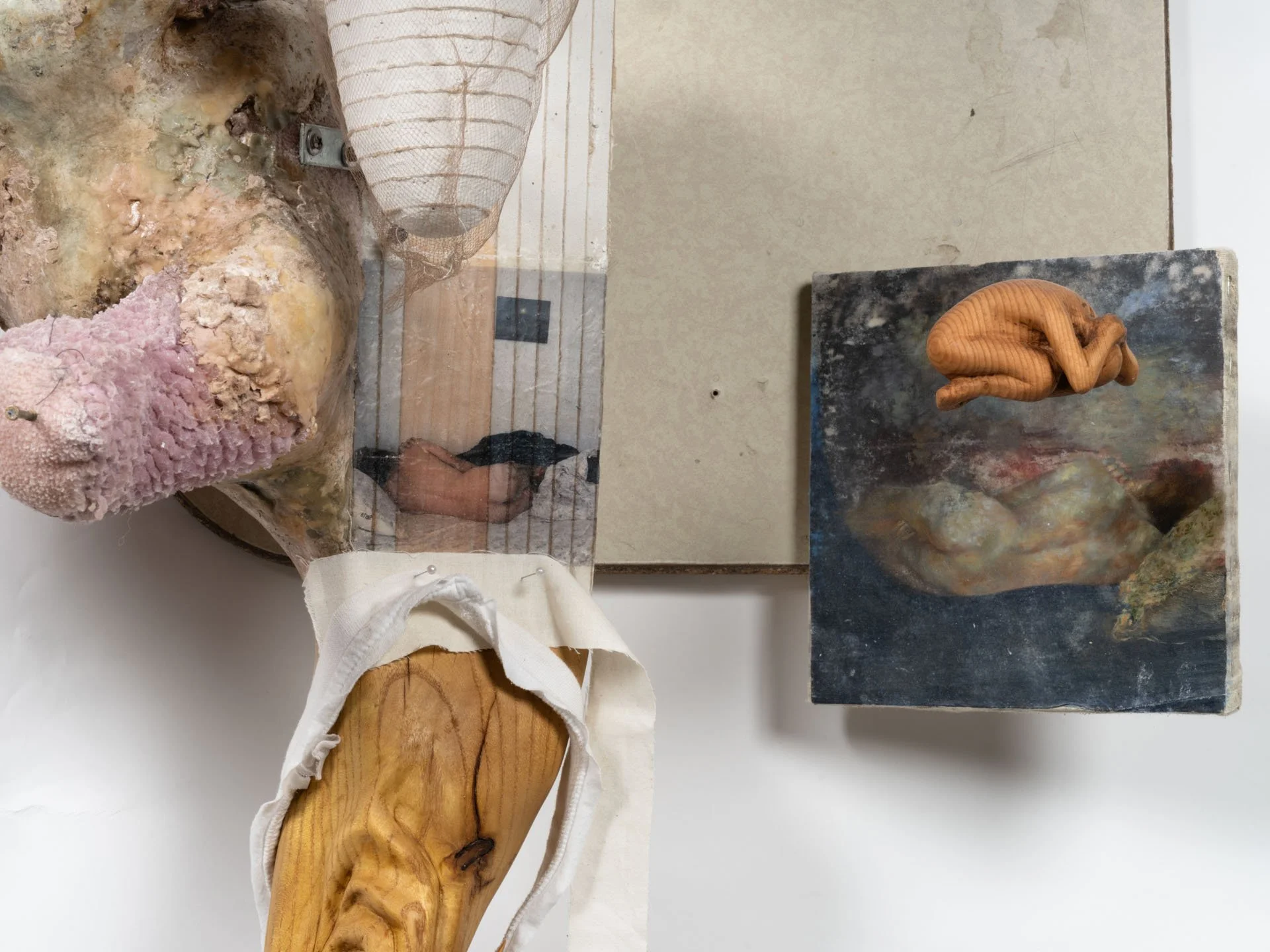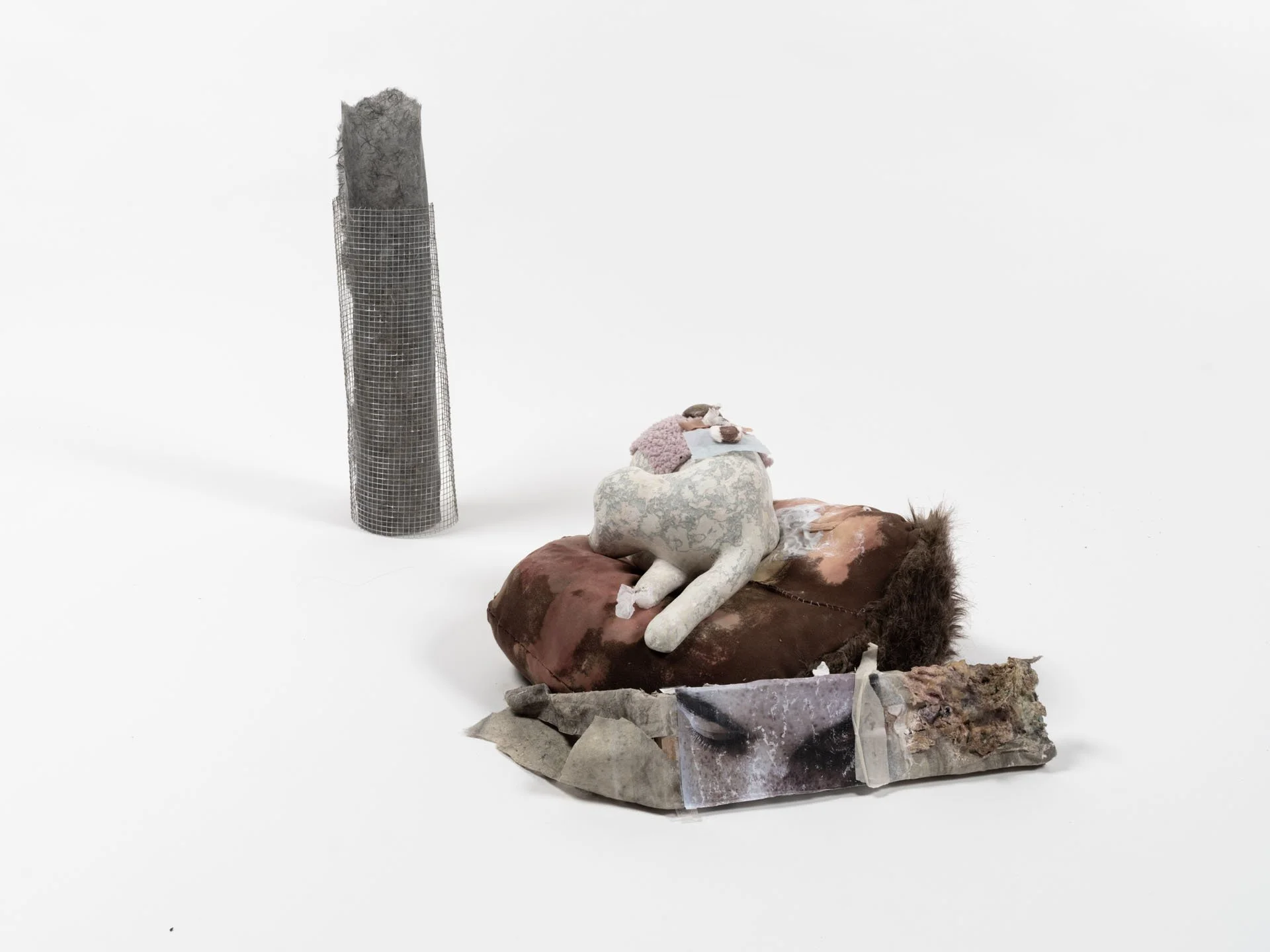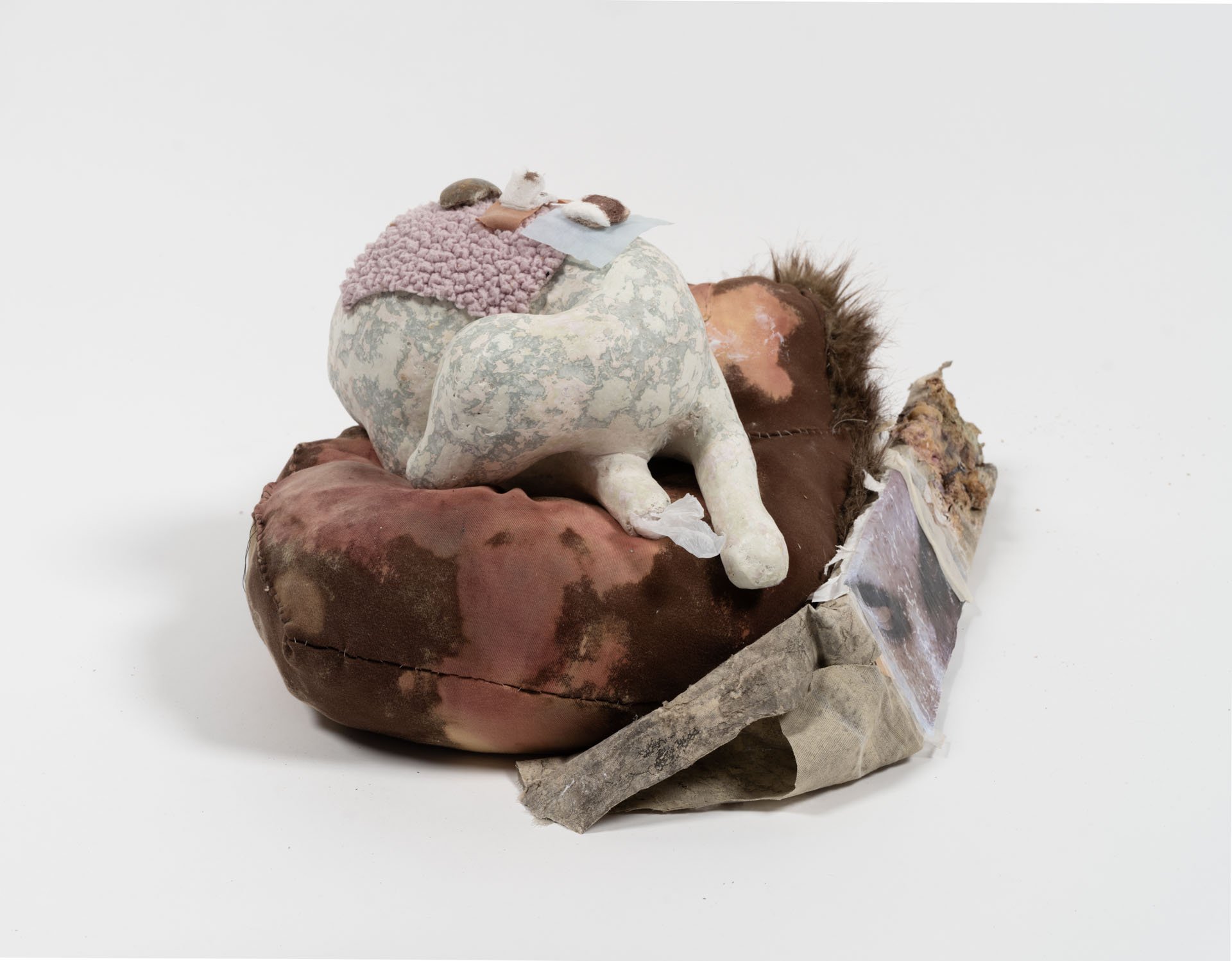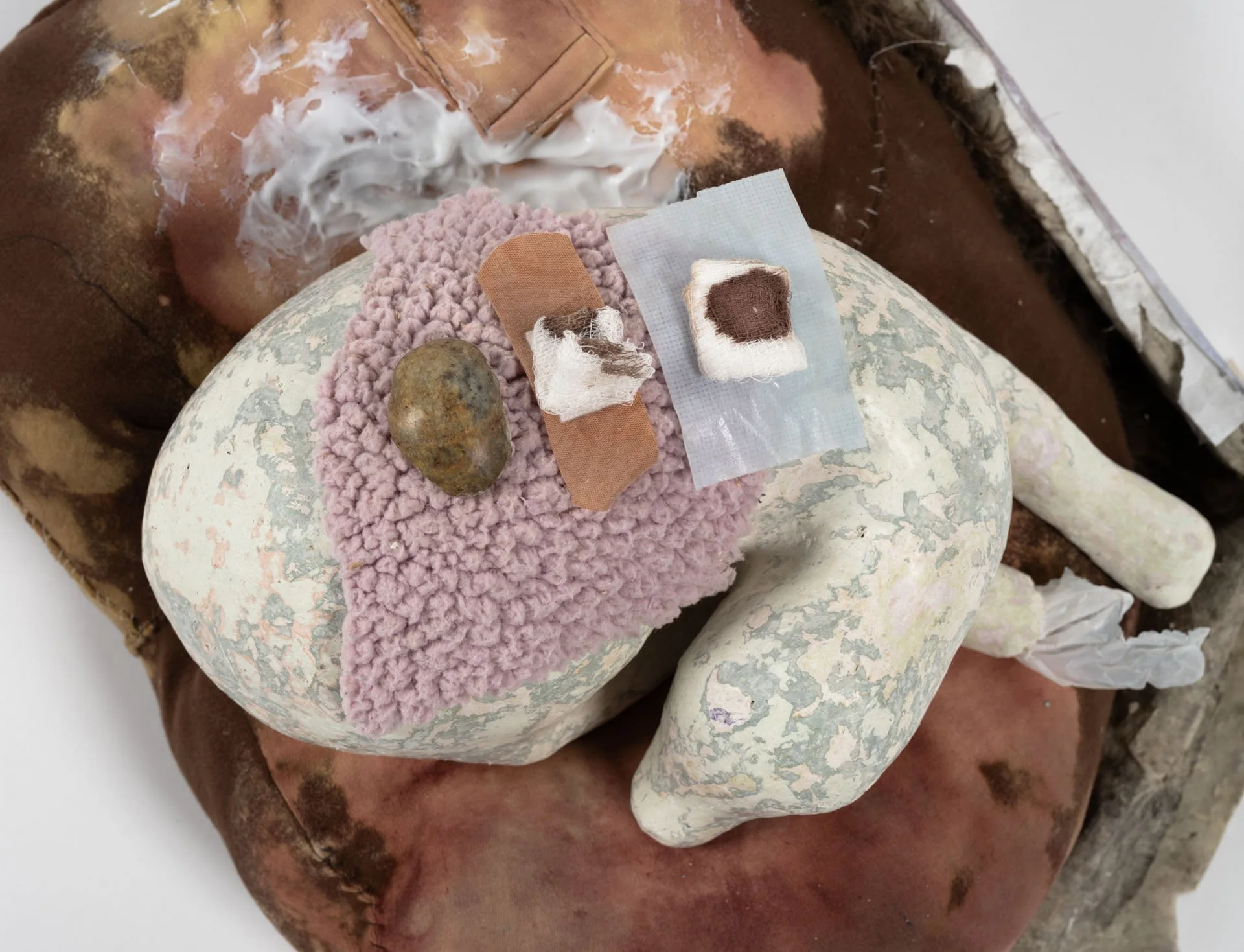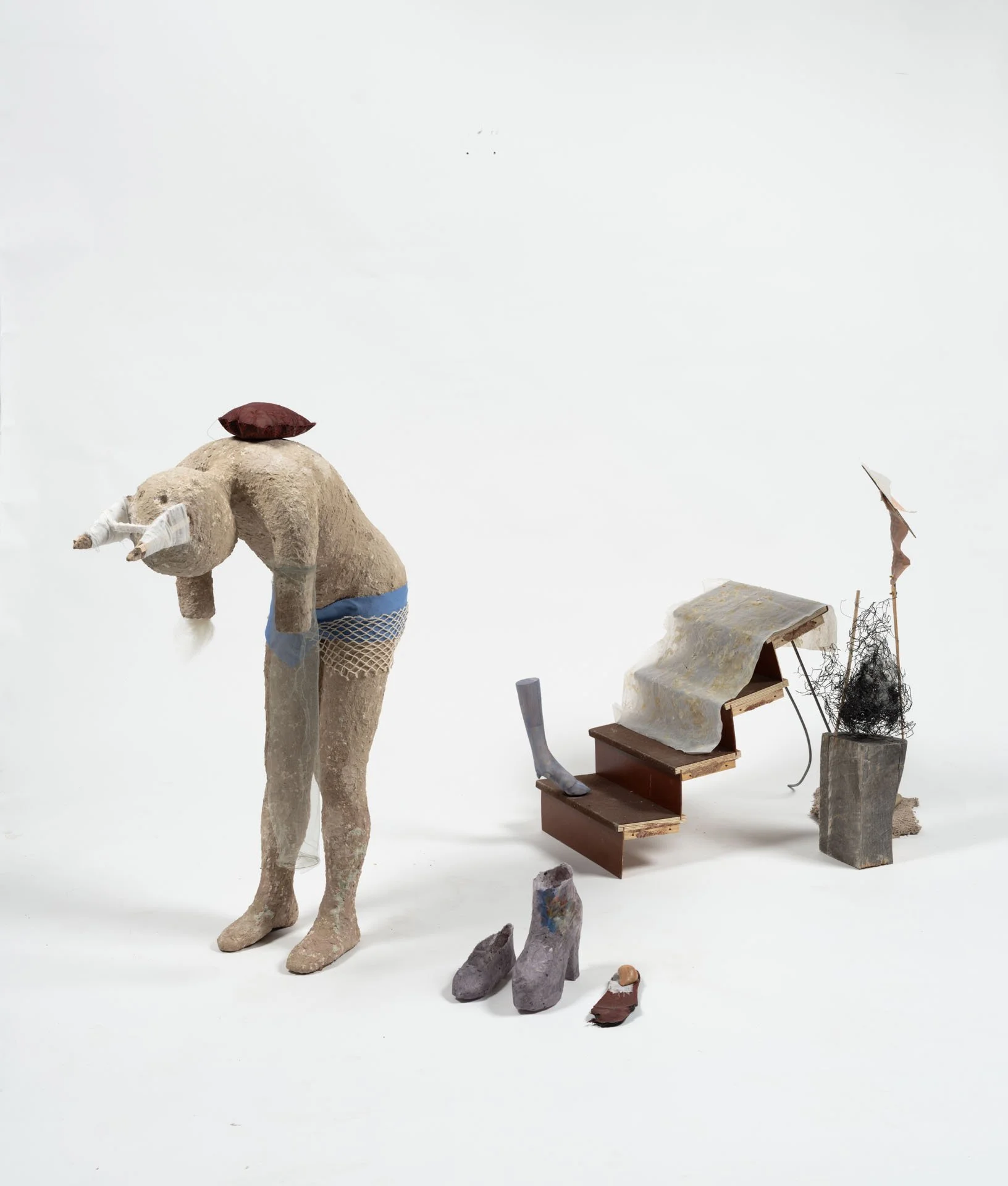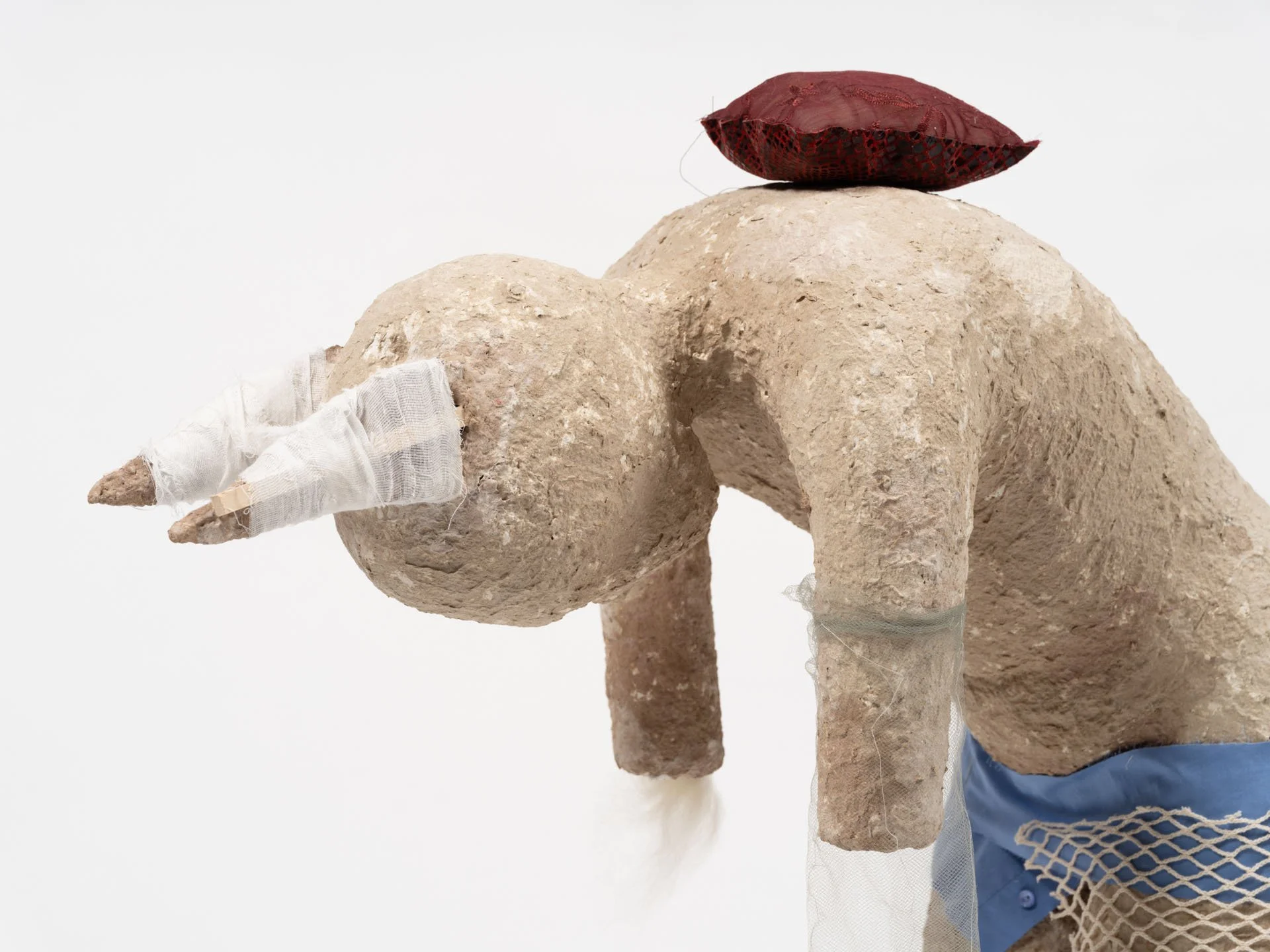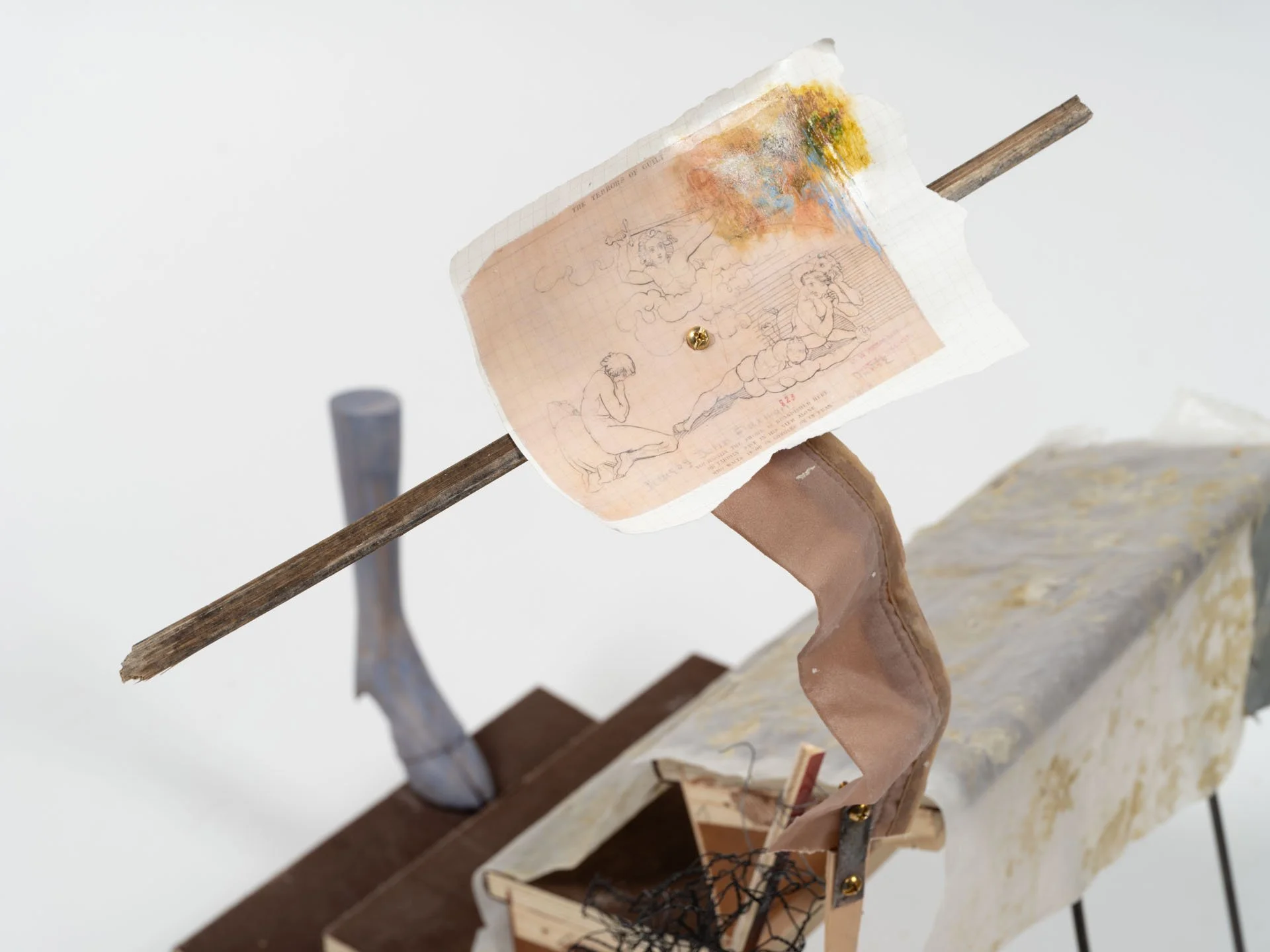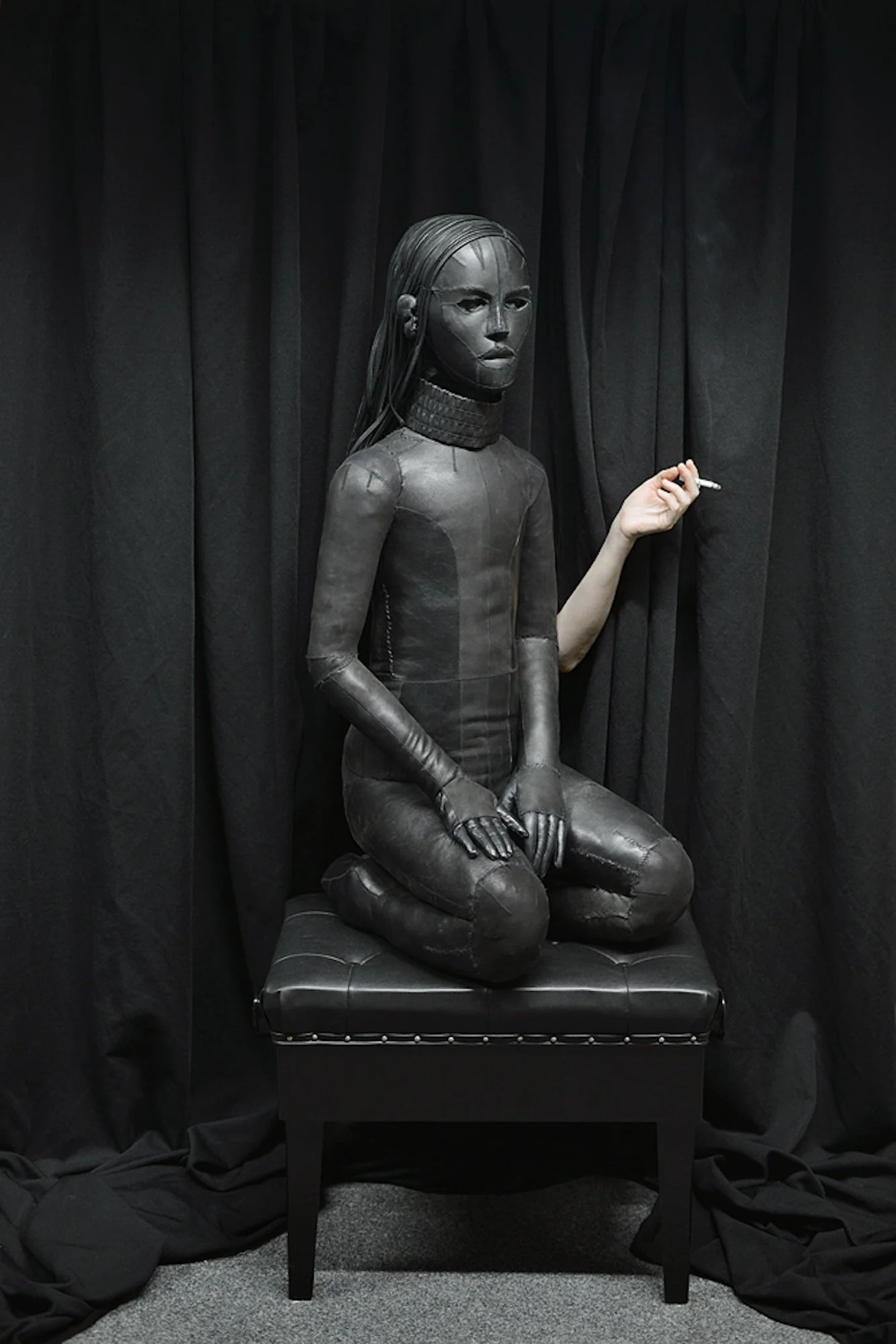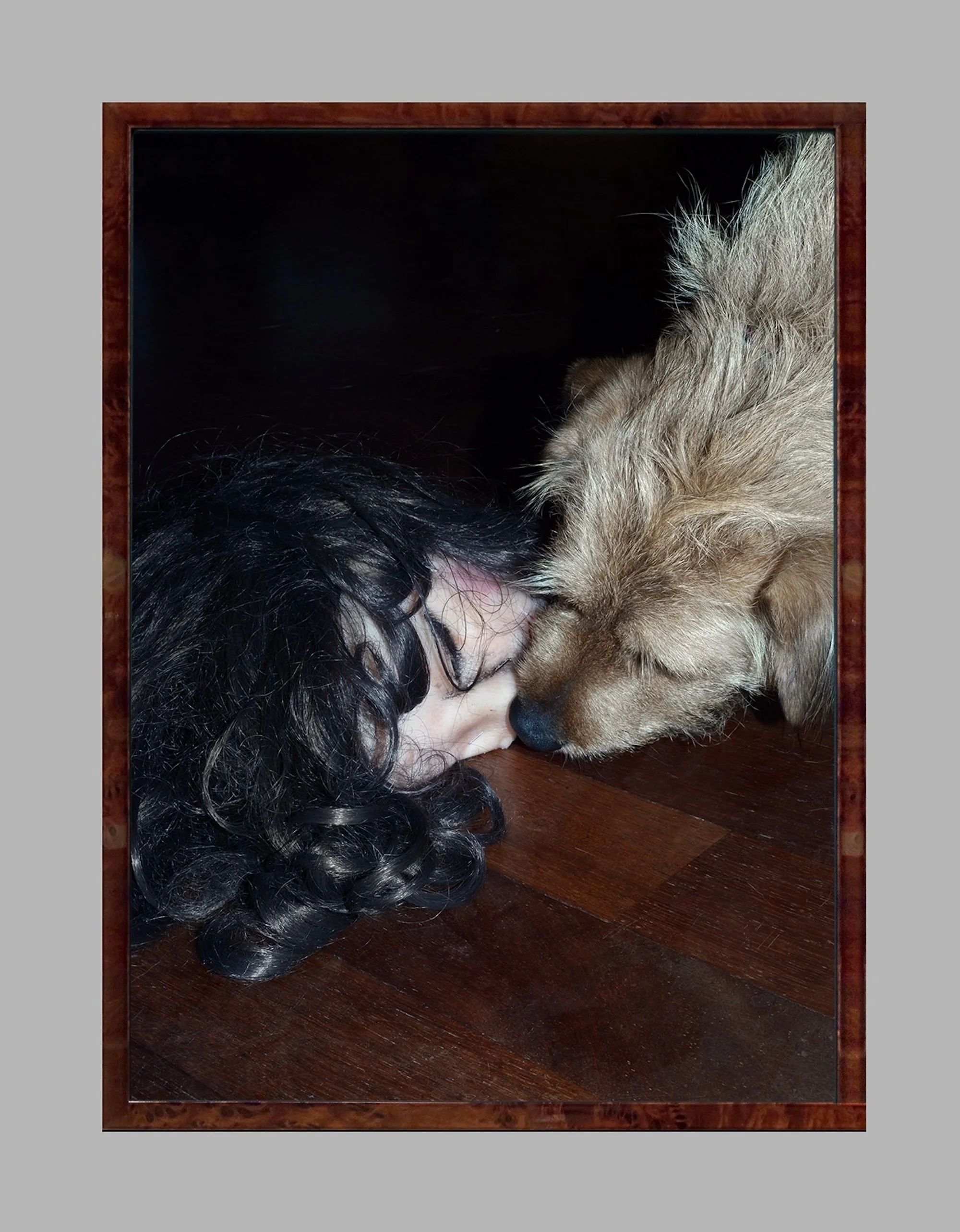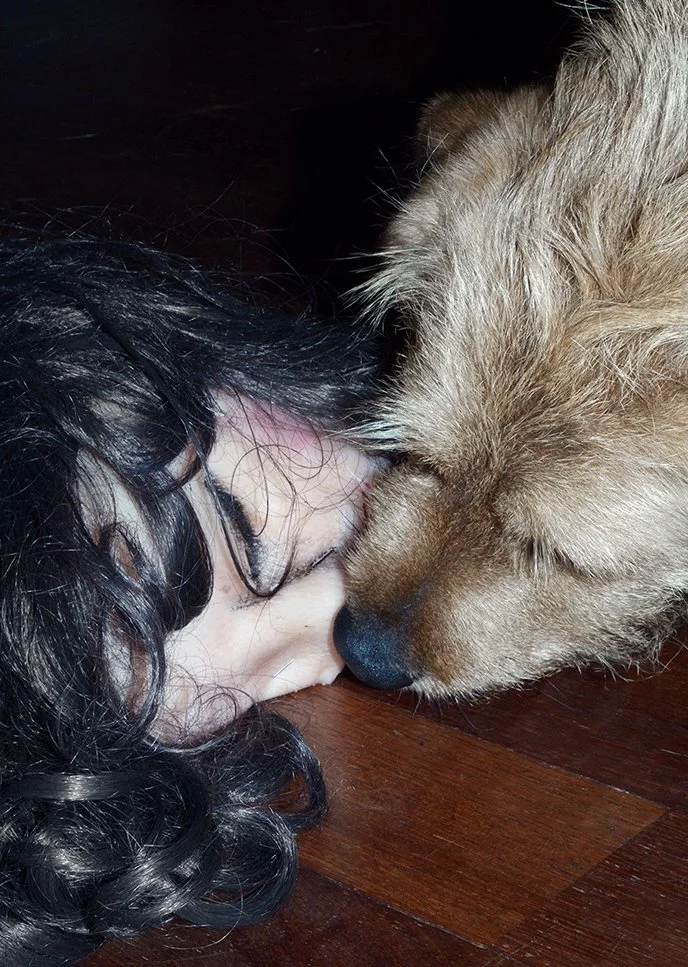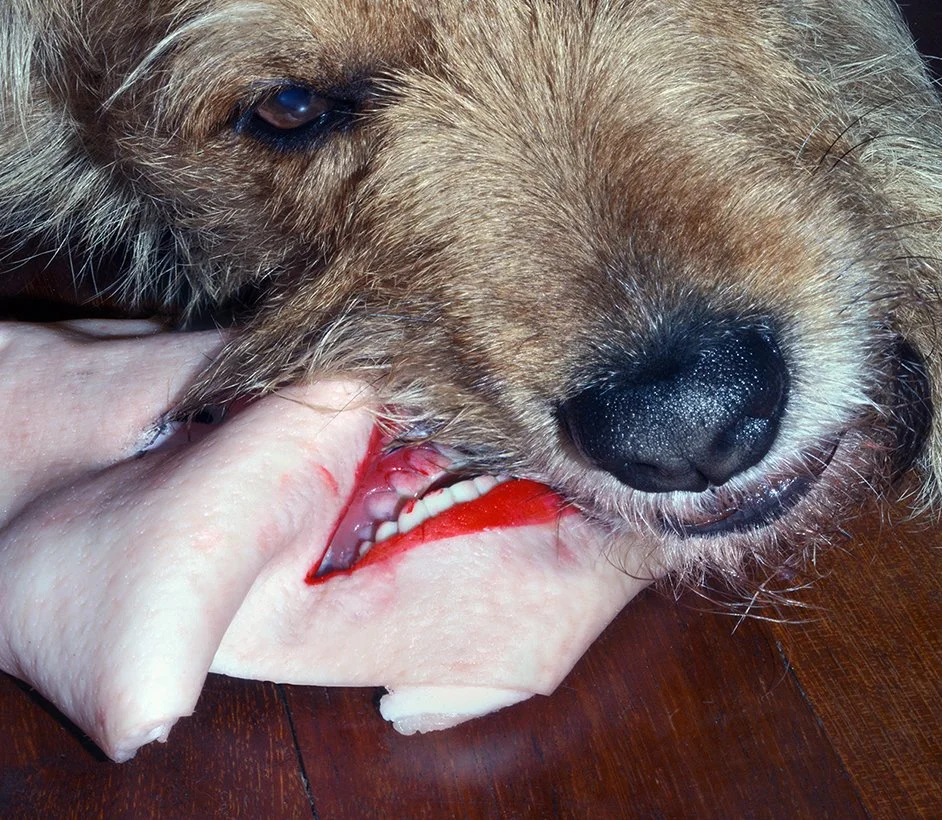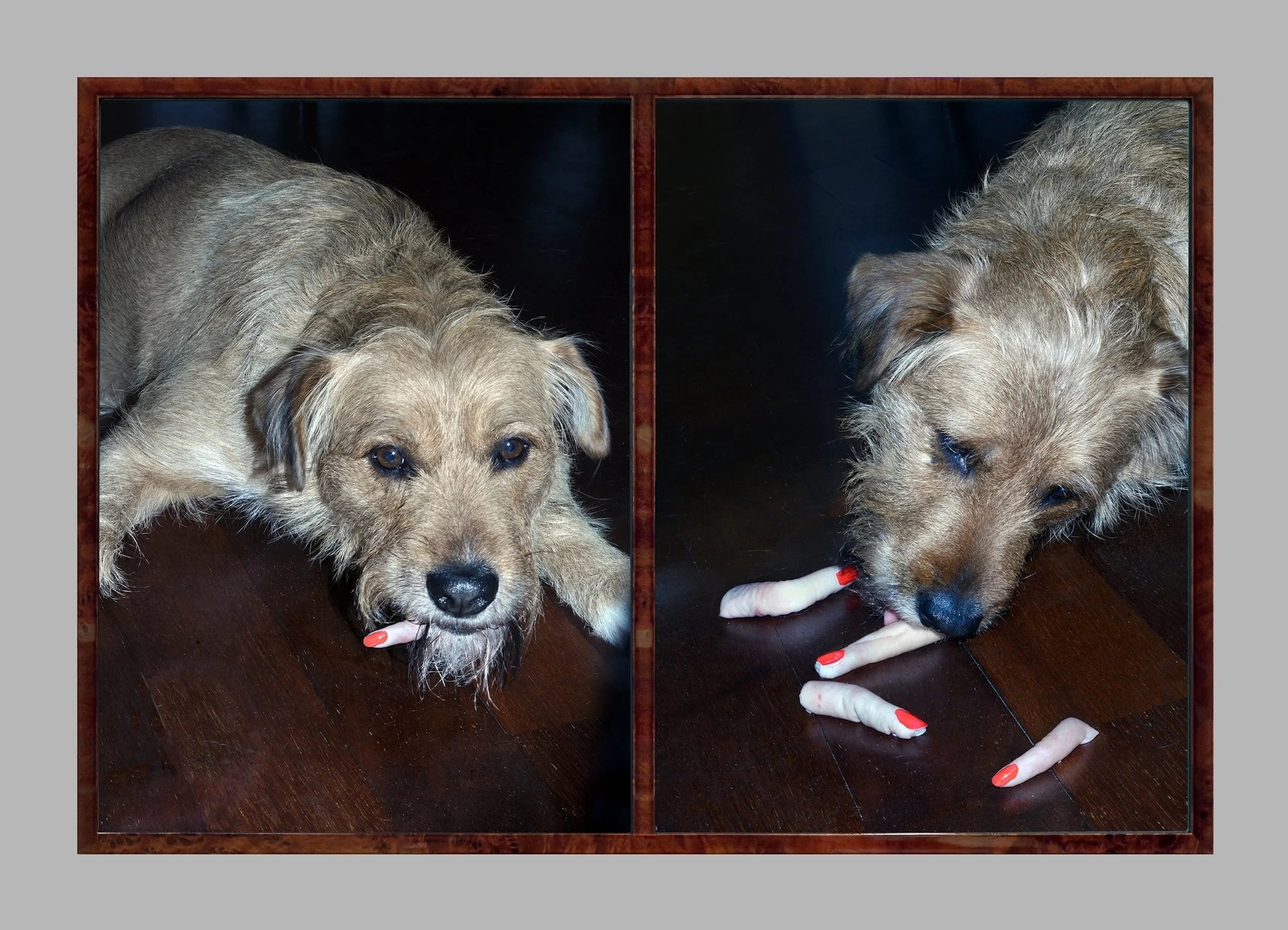
Art Basel Miami Beach 2023
Aneta Grzeszykowska & Catalina Ouyang
Nova - Booth N13
Lyles & King is pleased to announce a two-artist presentation for Art Basel Miami Beach including new works by Aneta Grzeszykowska and Catalina Ouyang. The booth will consist of photographs by Grzeszykowska alongside sculptures by Ouyang.
Aneta Grzeszykowska will present a new series, Selfie with Dog, that deals with fundamental issues of existence, absence, and construction of the self and identity. Selfie with Dog depicts her family dog tearing apart and consuming pigskin masks made in the artist’s likeness. The use of this hyper-realistic simulacrum as a stand-in juts the darkly comic against the uncanny. The images evoke the early 20th-century avant-garde, psychoanalysis, and explorations of the surreal; such as Hans Bellmer's iconic photographs of female mannequins. Grzeszykowska often employs masks (making her a relative of Birgit Jürgenssen and Gillian Wearing) and effigies, but also goes as far as to propose the erasure of the self. She made various attempts at “taking off” her skin (self) in order to look at it with an outsider’s gaze. Exploring the image as a signifier of a person’s identity, existence, or as a projection of the viewer, the pigskin becomes a membrane of contact, the layer of negotiation, but also the representation of her body. All these fetishes with magical potential exhibit a darkly comic power reversal. An animal eating its owner is a means of questioning her own singularity, the boundaries of the self, and ultimately existence. Grzeszykowska’s work is in the collection of many museums and she has exhibited in dozens of institutional exhibitions including the Biennale di Venezia in 2022.
Catalina Ouyang will present three new sculptures. Ouyang’s work examines patriarchal structures, gendered violence, and historical formation. Their work consistently disrupts normative, heteropatriarchal frameworks of identification and self-definition. Ouyang’s mixed-media sculptures merge human forms, architectural elements, and a slew of unexpected materials: wood, plaster, bone, stone, hair, and salvaged objects. This synthesis pushes formal elements of the work to the edge of recognition, suggesting a refusal of the notion of a pure origin and a conjunction of discard and mending, wound and repair. Ouyang’s intuitive use of organic and inorganic materials is simultaneously poetic, primordial, and abject, utilizing a language that remains close to the body. Ouyang’s work has recently been acquired by Columbus Museum of Art, Cantor Arts Center, Nasher Sculpture Center, Brooklyn Museum, and High Art Museum.
Catalina Ouyang engages object-making, interdisciplinary environments, and time-based projects to indicate counter-narratives around representation and self-definition. Through expansion, fragmentation, and abstraction, Ouyang proposes the body as a politicized landscape subject to partition. Working gnostically with materials ranging from hand-carved wood and stone to appropriated literature and historic artifacts, Ouyang also attends to critical reimagining of historical formation wherein monstrosity, animality, and toxicity act as ciphers for the psycho-affective alienation of the minor subject.
Catalina Ouyang has had work exhibited at Lyles & King, New York; Night Gallery, Los Angeles; Columbus Museum of Art, Columbus; Institute of Contemporary Art at MECA&D, Portland; Aldrich Contemporary Art Museum, Ridgefield; Jeffrey Deitch, New York, NY and Los Angeles; Make Room, Los Angeles; No Place Gallery, Columbus; Real Art Ways, Hartford; Galerie Kandlhofer, Vienna; Nasher Sculpture Center, Dallas; Kimball Art Center, Park City; Simon Lee Gallery, London and Hong Kong; Micki Meng, San Francisco; and Murmurs, Los Angeles; among many others. Ouyang is the recipient of numerous awards and grants including Fountainhead Artists Residency, 2024, and Smack Mellon Artist in Residence, 2020-21. Their work has been written about in the New York Times, Artforum, Frieze Magazine, FlashArt, The Cut, Flaunt Magazine, and Art & Object, among others. Their work is held in the public collections of Cantor Arts Center, Stanford; Kadist Foundation, Paris and San Francisco; Nasher Sculpture Center, Dallas, Columbus Museum of Art, Columbus; Perez Art Museum Miami, Miami; and Faurschou Foundation, New York; among others.
Catalina Ouyang
grief volume (Powder Mill; Anvil Ct; Mulberry and Grand), 2023
Textile, school desk top, steel, brass, hardware, hedge wood, pine, plaster, epoxy clay, acrylic gel transfer, oil paint on panel, drywall panels, and soapstone
55 x 22 x 12 inches, 139.7 x 55.9 x 30.5 cm
grief volume (Powder Mill; Anvil Ct; Mulberry and Grand), 2023 (detail)
grief volume (Powder Mill; Anvil Ct; Mulberry and Grand), 2023 (detail)
Catalina Ouyang
Pity, 2023
Papier maché, plaster, textile, bleach, dye, wire mesh, paper, shellac, wood, pigment, digital print, gauze, tape, blood, soapstone, and toothpaste
21 x 24 x 28 inches, 53.3 x 61 x 71.1 cm
Pity, 2023 (detail)
Pity, 2023 (detail)
Catalina Ouyang
syndrome, 2023
Papier maché, textile, discarded elements, steel, brass, oil paint, paper, oak, pine, pet staircase, acrylic gel transfer, hardware, wire mesh, wool roving, plastic, and resin
72 x 42 x 40 inches, 182.9 x 106.7 x 101.6 cm
syndrome, 2023 (detail)
syndrome, 2023 (detail)
Aneta Grzeszykowska's photographs and video use dark, probing humor to explore sexuality, feminism, and the construction (and violent erasure) of the self. Over the past two decades, Grzeszykowska has used performance, photography, sculpture, and video to investigate the multiplicities of the self, the history of feminism, and the phenomenology of her respective mediums. Grzeszykowska’s art draws her into the arena of Donna Haraway’s woman-cyborg. In breaking with the old, outdated schema, faded frames, and post-romantic, patriarchal phantasms, she retains an unpredictability and hybridity that lies beyond the confines of the dual-channel possibilities of identity, connecting that which is human with what is technical, the organic with the synthetic, male and female, alluring and repugnant, and, particularly in the case of her latest works, the artistic and the non-artistic.
Aneta Grzeszykowska (b. 1974, Warsaw, Poland; lives and works in Warsaw) has had work exhibited most recently in The Milk of Dreams, curated by Cecilia Alameni, Giardini, La Biennale di Venezia, Venice, IT. Her work will be including in the 8th edition of the Yokohama Triennale in 2024. Grzeszykowska's work has been exhibited at Haus der Kunst, Munich, DE; Museo de Arte Moderno, Mexico City, MX; and Walker Art Center, Minneapolis, US; Kunstforum tu Darmstad, Darmstad, DE; The Francisco Carolinum Museum for Modern and Contemporary Art, Linz, AT; Raster Gallery, Warsaw, PL; MOCAK Museum of Contemporary Art, Krakow, PL; Contemporary Art Museum, St. Louis, US; Heidelberger Kunstverein, Heidelberg, DE; Fotografiska Stockholm, Stockholm, SE; Fotomuseum Winterthur, Winterthur, CH; Zachęta National Gallery of Art, Warsaw, PL; and Ludwig Museum of Contemporary Art, Budapest, HU; among many others. Her work is included in several museum collections, including the Solomon R. Guggenheim Museum, New York; Centre Pompidou, Paris; San Francisco Museum of Modern Art, San Francisco; Walker Art Center, Minneapolis; Fotomuseum Winterthur, Winterthur; Hammer Museum, Los Angeles; Museum of Modern Art, Warsaw; Sammlung Verbund, Vienna; and ICA Miami, Miami; among others.
Aneta Grzeszykowska
Selfie with Dog #01, 2023
Archival print on cotton paper
17 7/9 x 23 2/3 x 7/9 inches, 45 x 60 x 2 cm
Selfie with Dog #01, 2023 (detail)
Aneta Grzeszykowska
Selfie with Dog #02, 2023
Pigment ink on cotton paper
50 7/9 x 23 2/3 x 7/9 inches, 129 x 60 x 2 cm
Selfie with Dog #02, 2023 (detail)
Aneta Grzeszykowska
Selfie with Dog #03, 2023
Archival print on cotton paper
50 7/9 x 23 2/3 x 7/9 inches, 129 x 60 x 2 cm
Aneta Grzeszykowska
Selfie with Dog #04, 2023
Archival print on cotton paper
34 1/3 x 23 2/3 x 7/9 inches, 87 x 60 x 2 cm
Selfie with Dog #04, 2023 (detail)
Aneta Grzeszykowska & Catalina Ouyang in Conversation
On the occasion of Art Basel Miami Beach 2023, Lyles & King is pleased to exhibit a two-artist presentation with Aneta Grzeszykowska and Catalina Ouyang.
In their conversation, Grzeszykowska and Ouyang discuss conceptual and material overlaps within their practices. Their rich, intellectual dialogue touches upon ideas of tenderness, eroticism, control/agency, and destruction as generative forces in their art-making.
Aneta Grzeszykowska: The multiformity, fluidity, and specific polymorphism of your sculptures evoke the figure of the cyborg woman described by Donna Haraway. Do you identify with this interpretation of your work? Are the hybrids you create a vision of loss or rather of freedom?
Catalina Ouyang: I arrived at the hybrid out of my love for the liminal beings of myth and the transformations that occur within those stories. These stories of mutability seemed to be instigated by crisis and alterity, which have been two ever-present conditions in my formative experiences.
In terms of fluidity and a non-hierarchical handling of material, I am interested in how Haraway’s contemporaries working in New Materialism think about time, multiplicity, and simultaneity. I seek out different ways of refusing the index and rational or "universal" truth, but I am not a posthumanist. If anything, my work is very anthropocentric. I have unfinished business with humanity. I pursue contradiction because artmaking is the primary outlet for my death drive. In occupying my body and mind in the space where, in Karen Barad’s words, “time is out of joint,” I exhaust myself before I can implode.
CO: To turn that question back to you, Aneta, are you thinking about Haraway? Your use of avatars, while more primordial in sensibility, formally reminds me of Lynn Hershmann Leeson's Breathing Machines from the 1960s. Is this something to you? What kind of agency is generated by, or conferred upon, the proxy of yourself?
AG: The representation of the body as an object/avatar has been analyzed in my work, for example in the Mama series, shown at the main exhibition of the 59th Venice Biennale. In this series, my daughter interacted with a silicone object that was actually her mother's double, i.e. mine. In Mama, the doll becomes a mirror reflecting the viewer's emotions.
Using a double allowed me to observe my relationship with my daughter from the outside. Through my work, I often break the perception of my own existence from the formal limitations of the body. I look at my identity through a prism of other people’s experiences, as I try to break away from subjective perception.
AG: I would like to mention the works of Alina Szapocznikow, titled Photosculptures (1971), which are chewing gum sculptures formed by the artist's teeth. Teeth are the physiological and conceptual tools that shaped her objects, like in my series Selfie with a Dog. Do you also have an artist with whose concepts you identify with or relate to? Who are they?
CO: Lately, the writing and films of Marguerite Duras: she muddles first- and third-person, present and past tense in ways that embody the unruliness of memory and subjectivity. In my recent sculptural works, I materialize misremembered forms: a stuffed animal, a gesture, a posture, a lost garment, a lover's freckled skin, a sensation from a dream that escapes you but leaves you unsettled. I am chasing what is tactile and sensory in the region between impossibility and the doomed attempt at recall. Abstracted volumes are constituted of the sheetrock and wire mesh used to build the suburban homes I grew up in. Acrylic gel captures the phantom of a digital image and adheres it onto an unstable surface. Duras starts from the "I" and flings the pronoun into a void; she fixates on a single moment and writes in concentric circles around it until the subject disintegrates completely. In both our work, revisitation both creates and destroys.
CO: Selfie with a Dog is a departure from the conditions of control in your earlier work. This series has a markedly different approach in terms of what is seen, what is concealed, and who has agency. There is great generosity and, daresay, gentleness in inviting risk and accident, as in the process of making Selfie with a Dog. What for you is at risk? And what is protected?
AG: In 2014, in a series of photos titled Selfie, I photographed naturalistic sculptures I made, depicting fragments of the human body prepared from animal remains. Exhibiting photographs of sculptures instead of their physical forms comes from my desire to take control over their representation. In 2022, I returned to the subject in my series Domestic Animals which recycles the masks. These images show my two dogs wearing the now dried masks. While working, I noticed that my dogs started biting and licking the objects. At first I was concerned about this, but then I realized the enormous interpretative potential. So in 2023, I made “fresh” copies of these objects and fed them to the dogs.
In Selfie with Dog, the dogs are the performers and took complete control. The gradual disappearance of objects emphasizes their fragility and impermanence, evoking a certain existential anxiety. Paradoxically, I have the impression that by giving up control, I am entering another level of control. At the same time, the dogs’ innate desire to eat objects becomes a proposition that, when controlled and conceptualized, turns into an artistic creation.
AG: In Selfie with a Dog, a body is simply a dead body and can be literally, not figuratively, eaten. Animal remains cease to resemble a human body and begin to be simply meat. Meat, being dehumanized, no longer arouses empathy. What is the function of using real remains (in the form of hair, bones, skulls) in your works?
CO: The consumption of the dead, decorated body makes me think about funerary practices involving consumption of the corpse. These are honorable rituals. I don't find a dead or discarded thing to be dehumanized. I engage with morbidity and the so-called abject, in fact, out of inexhaustible optimism: because I have faith that it amounts to something, be it renewal, retrieval, or transcendence. When I feel blocked, I return to the sculptures and ex-votos of houses of worship, for the profound love they evince in their transformation of humble materials such as softwood, wax, papier mache, and animal parts.
My work is invested in social space, and there is plenty to be cynical about in considering the built environment and attendant historical discourse. I am not free of cynicism or anger, but more and more I find grace in equivocation itself. Bones are the architecture of the body; hair, skin, and clothing form the planes along which the body interfaces with its environment. How do I metabolize or represent these materials in a way that goes beyond offering a mirror to grievance? I have been paring back formal and material elements of my work and trying to ascertain something essential. I do not have identifying language for this “something” yet, but I know how it feels: tended, textured, unbearably light, open-ended, alternately shrinking and billowing.
CO: I love the image of the series where it looks like the dog and Selfie sculpture are kissing. I am interested in spaces where tenderness, eroticism, and destruction coincide. As a mother who lives with dogs, your daily reality involves caretaking. How has this informed the stakes of your practice?
AG: In my opinion, the private territory is sufficient to analyze the complex psychological processes taking place across nearly all kinds of relationship dynamics. The process of care often creates a zone in which tenderness intertwines with violence. In an earlier series, Mama, I reversed the traditional roles between child and mother, deconstructing the established pattern of parental domination.
In Selfie with Dog, eating becomes violent and surprising and begins to intertwine brutality with tenderness - the sight of a dog leaning over a person's face was suspended somewhere between these extremely opposite emotions. Also the figure of a feeder artist created here, allowing herself to be devoured by her own dogs, metaphorically cannibalizing her own art, brings to mind the aforementioned caring activities.


